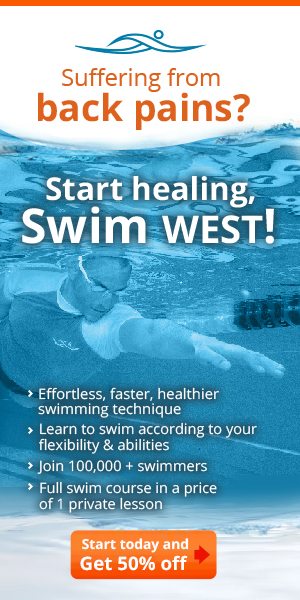Lesson number 2 – How to float better, or, in other words, how to keep your body from being halting while swimming.

Last time we talked about the palm and the depth in which we stretch our hand, the two most important element in the WEST swimming technique.
Today we’ll talk about floating.
Many swimmers think that in order to float better they need to work harder with their legs or paddle faster with their hands. Our goal is not to do those things, but allow the body to float naturally even before we get to the paddling or leg work. We want to eliminate any element that stops our body.
When we are vertical. We are 100% stopped. When we are completely horizontal, we are 0% stopped and can float easily.
What are the elements that stop us?
The head – our instinct is to lift our head, but for most of us, when we lift our head, our feet will sink and we will be stopped, or we will be able to lift our feet, hurting our lower back.
Breathing – If you know you tend to sink, don’t exhale in the water. Although exhaling adds 15% more power, it’s not worth it if the price is sinking.
The palm – The more relaxed your palm is, the easier it is to float.
Stretch depth – If you stretch your hand close to the water line, your feet will sink and you will create pressure on your neck and lower back.
Dragging your legs – It’s very important not to work with your legs but to drag them, allowing them to slowly float upward. When you back, most specifically the L4 L5 vertebrae, are relaxed, your whole body will float.
Stretching – The more you stretch, the easier it is to float. Whether you stretch for one second, two or three, depends on how flexible you are, but right now we need to think about stretching to the maximum, even if our feet sink a little.
Next lesson – breathing without stress to the neck.
Ilanit Yurman lost her leg to Cancer when she was 9 year old.



